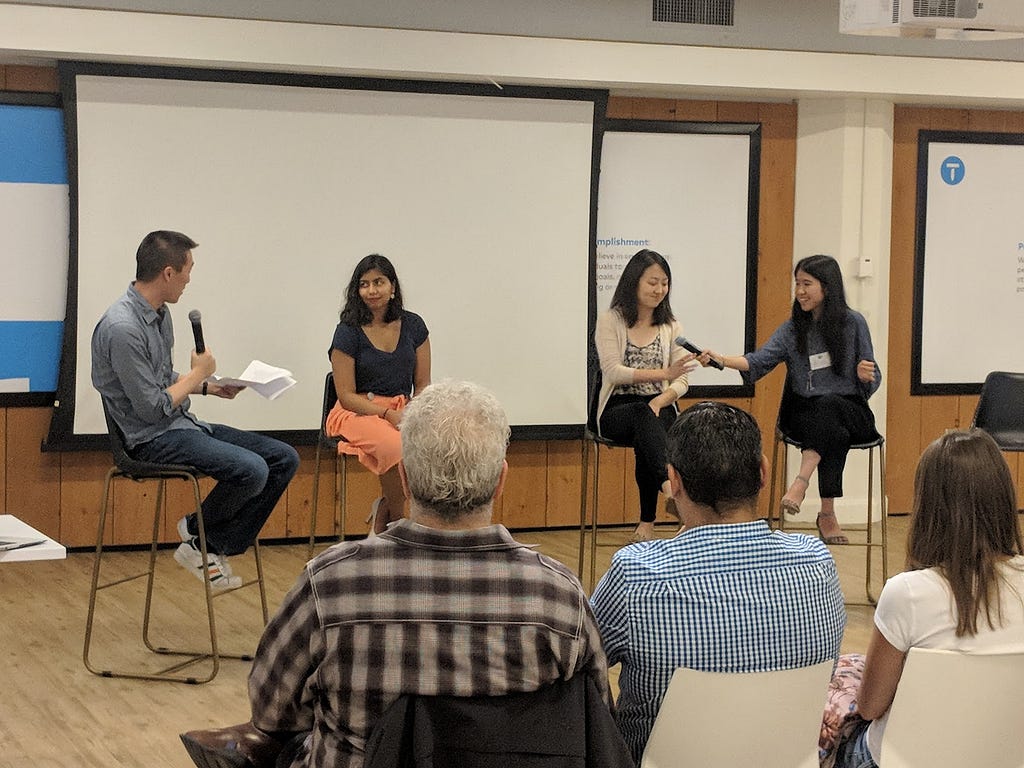Latest news about Bitcoin and all cryptocurrencies. Your daily crypto news habit.
Credits: Advancing Women in Product Team - Helen Fan, Aakrit Prasad
Consumers today spend, on average, over 10 hours a day interacting with digital products. With so many users often online, wouldn’t it be easy to achieve product virality for a well-defined, innovative technology application?
This is a common misconception among newcomers in the consumer space. Every business wants to achieve viral growth to reach more users quickly, however, user attention spans are getting shorter as they’re inundated with more and more products and services every few months. Achieving consumer virality requires not just great product that users like, but also an empathetic appeal where the value is easily relatable for it to spread quickly.
To get some tips and tricks in achieving vitality for consumer products, AWIP hosted a panel of product experts from various fast-growing B2C companies at Thumbtack. The panel featured Alice Xiong (Senior Product Manager at LinkedIn), Lulu Cheng (Product Manager at Pinterest), and Vinamrata Singal (Product Manager at Thumbtack) with the discussion moderated by Eusden Shing (Head of Product at Twenty). Shared below are highlights from their discussions.
In your company, what’s a recent example of virality that you’ve seen and what made it go viral?
With Pinterest, on July 16th, 2018 — Amazon Prime Day, there was a huge spike in pins shared for an Instant Pot cooker. Further review showed that this pin not only reflected a high-value price point but also included steps on cooking a Philly cheese steak recipe and created a sense of urgency to purchase for anyone that saw it, which led them to pin it.
At Linkedin, virality is most often seen in posts that best speak to meeting a need, showing some vulnerability, or sharing a personal story that audiences can relate or empathize with. Last year, a post went viral after a Linkedin member posted a rejection letter from a journalist job. That individual received enough recognition to later land a job as an editor at Buzzfeed.
What are some products that have successfully achieved virality and how?
There are few great examples of products that have grown rapidly through virality over the past decade. Tinder, for example, applied a novel design of swiping based decisions and workflows to the dating app ecosystem to quickly deliver value to their users. This approach gamified their product, allowing Tinder to stand out as an exciting and faster solution to previous alternatives.
In another multi-billion market, video games, Fortnight was another example of viral growth that provided users with an experience that was differentiated from the traditional first-person shooter games. Fortnight provided users with a novel cartoon-like aesthetics, a picaresque gameplay, with a highly performant experience that was supported across every user platform: game consoles, desktop, mobile, and was supported on video streaming services like Twitch. This enabled users to remain easily hooked into the game, as a player or a viewer.
Looking across yet another industry, Musical.ly, now TikTok, was another example of successful virality that allowed users and influencers to create very cool music videos and then easily share it on media channels like Instagram, Facebook, and YouTube for others to see and try. In addition, Musical.ly created a ‘challenge’ like atmosphere within its app ecosystem with features such as ‘hash-tagging’, emotionally hooking users to invest more time in improving their singing to grow their brand and voice (no pun intended).
Can you share how your team formed a product hypothesis and measured its success?
Thumbtack’s user journey traditionally required users to complete a set of questions that would be get sent to a platform of respective professionals who would then analyze the requests to quote clients. However, this process was usually slow, and there was no way for customers to get instant gratification.
To improve this behavior, the Thumbtack team decided to conduct and test a hypothesis: What if it was possible to automate the customer-to-professional matching process by understanding the types of jobs professionals wanted and the average cost estimate? This was a significant shift from the current process, but one that would decrease the user request completion time. This feature was launched as ‘Instant Match’ and was an immediate success, measured by an overall improvement in the user experience as well as an increase in the per user request & total request frequency of services through Thumbtack, directly improving their revenue.
Few years after launch, Pinterest’s noted that their home feed algorithm only relied on content from a users followers. To increase their user growth, engagement, and connection graph, the team wanted to test a hypothesis: What if users could be shown recommendations on new content to follow based on their shared interests? The team went ahead and implemented this and began to test the value by collecting user feedback. The initial feedback was widely positive, however, select power users (ie. frequent pinners) started to share negative feedback as they felt their now very curated list of follower feed was getting diluted with information they didn’t want to see. This constructive, positive feedback loop led to additional enhancements that later satisfied all users and helped increase the overall DAU as a success metric.
Often the best way to test new features and product improvements are to experiment and test. Experimentation allows for a constructive feedback loop to iterate feature further and release with more confidence.
What signals do you look for to validate whether a product or feature is getting traction?
Product signals often come from a mix of qualitative & quantitative feedback. These are often captured across various issue & feedback tools your company maybe users as well as emails or user forms. It’s always best to look at your user data to build hypotheses for designing new experiments to test features. It is also best to validate by talking to your users, conducting research studies, and observations of user behavior with your product to understand empathetically what issues, pain-points, or positive experiences customer have.
What are some tips to choose the right type(s) of virality methods for your product?
(ie. word-of-mouth, incentivized word-of-mouth, demonstration/exposure, etc)
Virality effect is often tied to the type of product and the strategy of a company at their current stage of growth. There isn’t a one size fits all. For Thumbtack, starting out, word-of-mouth and organic search were the primary viral means to acquire more customers (clients or service professional). As the company grew, they tried newer ways to achieve virality such as paid ads.
The last part of our session included a walk-through of a hypothetical user experiment creation around “incentivized referrals” for an on-demand boba delivery. To see our panel think through this in action, check out our recorded video and visit our Facebook page.
To wrap up, here are some successful tips on achieving virality
- Create a product that quick to get started and consume
- Provide users features that allow for early sharing & collaboration
Additional Resources:
- Podcasts: Master of Scale, Tech Forward, How I Built This, Clearly Product, Product Decoded
- Books: Predictably Irrational, Hooked: How to Build Habit Forming Products, Inspired,
- Websites: First Round Capital, Building Products for Viral Growth, Five Types of Virality, Building a Viral App Users Love
Achieving Virality In Consumer Products was originally published in Hacker Noon on Medium, where people are continuing the conversation by highlighting and responding to this story.
Disclaimer
The views and opinions expressed in this article are solely those of the authors and do not reflect the views of Bitcoin Insider. Every investment and trading move involves risk - this is especially true for cryptocurrencies given their volatility. We strongly advise our readers to conduct their own research when making a decision.

